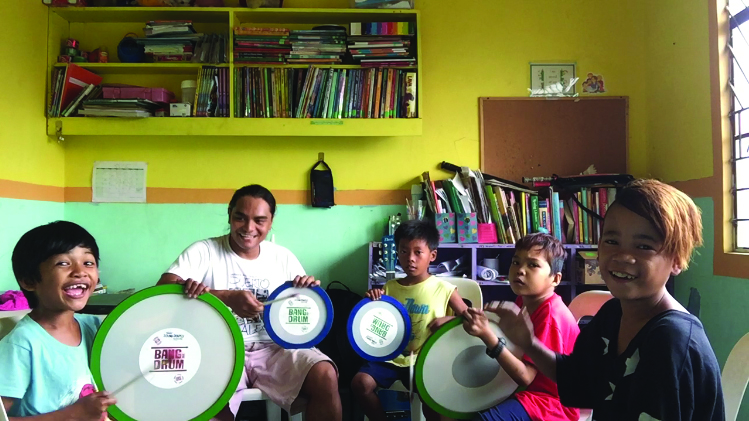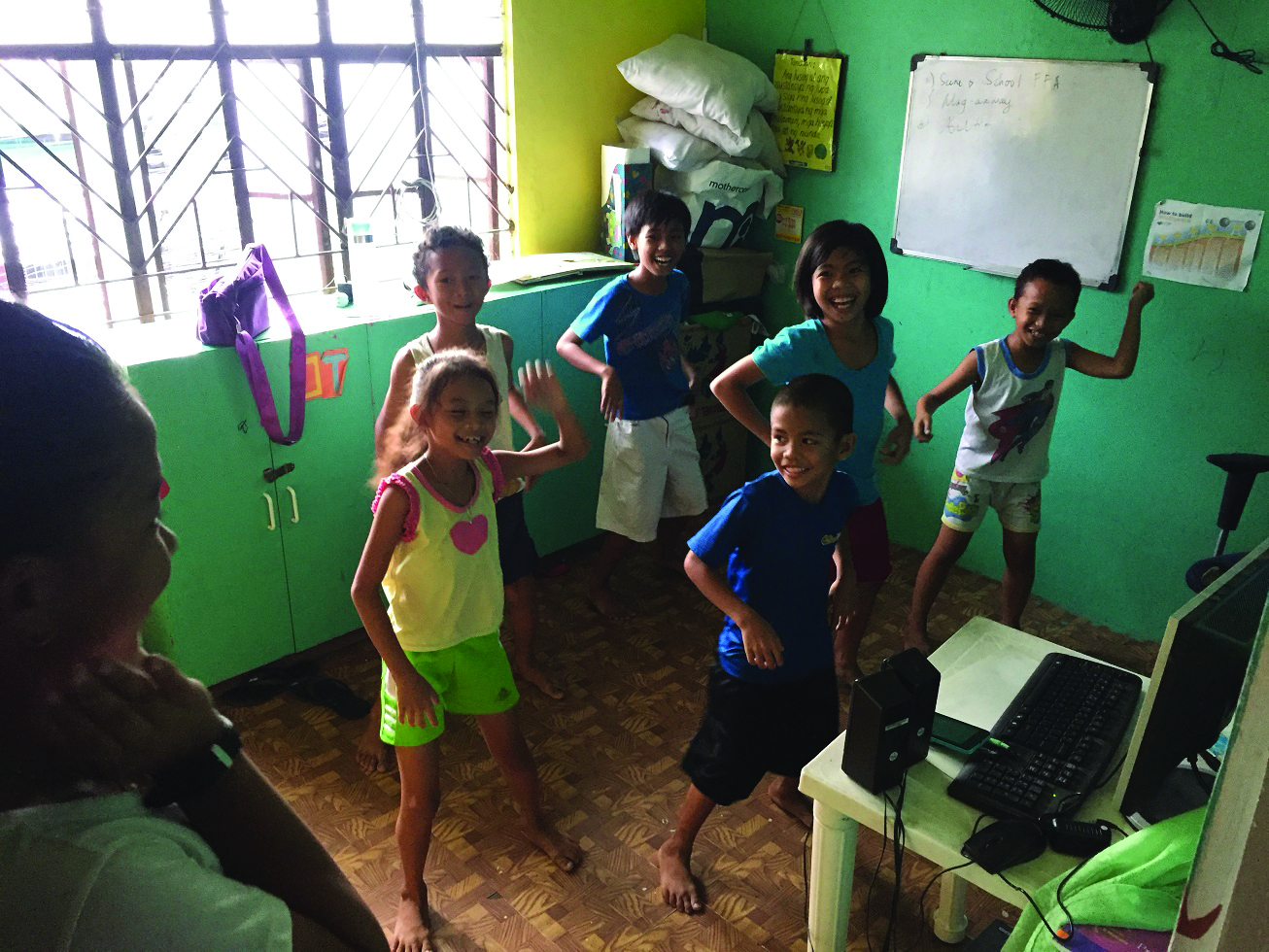Democratic education in the Philippines: What happens when students and teachers run the school together?
Roy Moore
Reframing the problem
The Fairplay for All Foundation is based in the Philippines. The official literacy rate here is 95.6%, yet half of Grade 1 students here will drop out of school. You do not need to pass a Mathematics class to realise those numbers do not add up. We have seen many children ‘pass’ several grades still unable to read and write their own name. But because they are now at a higher level they are labelled as literate. Many students drop out not just because class sizes are huge and going to school is expensive, but also because much of what they learn is useless in the real world.

Research in the Philippines shows students typically cite two reasons for dropping out: ‘it’s too expensive’ and/or ‘a lack of personal interest’. The researchers often describe ‘lack of personal interest’ as the child’s fault, but this is the wrong way round. The problem is not that students lack interest in school, it is that school is not interesting. Students are not bored in class; class is boring.
In business, if a customer does not like a product we innovate and make something new. In politics, if a voter does not like a policy, we adapt it. But in the classroom, if the student does not like what happens in school, their opinions and feelings are usually irrelevant.
This is an expensive mistake. The Philippines spends almost one-sixth of its national budget on education, building huge schools and classrooms. Many developing countries are following the same path, adapting education systems along similar lines to countries to such as the United States; building more classrooms, hiring more teachers, and putting more technology into classrooms.
However, few countries spend much of their budget on understanding students’ experiences. Few countries even ask students for their input. In business terms, they fail to do research and development and that kills the product. This is why our children’s experience of childhood in general will be vastly different to our own, but their experience of school will be much the same. The result is low student engagement, high dropout rates, and a terrible return on investment.
A brief history of school
So why is school done this way? Much of how we do school was invented in the 1800s and it has not really been updated since. It was designed to prepare students for factory life. This system was introduced to countries through colonisation regardless of how effective it was. When the Spanish arrived in the Philippines, for example, they were surprised to find that despite no formal education system the Philippines had a higher literacy rate than in Madrid.
But the modern education systems are based on Western countries’ development. The economy, rapidly expanding in the Industrial Revolution amid a population explosion, needed uniform workers to slot into their roles. And the education systems were mainly created in response to this need.
This is why students have no say in the traditional classroom. A child is compelled by law to go to school; they have no choice in what they learn, how they learn, and who they learn from and with. Even what students wear, talk about, and when they can go to the toilet is decided by school authorities.
Basic human rights, such as freedom of expression, movement, and participation, are curtailed towards the goal of learning. We still assume this is for the good of the student but we also know sitting for long periods is unhealthy. We know lecturing at children and expecting them to memorise everything is ineffective. We learn better the more we are actively engaged in an activity on our terms. So it is no surprise that students across the world are so disengaged, but what alternative is there?
The Fairplay School: A local solution
At the Fairplay for All Foundation we work in Payatas, one of the largest and poorest slums in the Philippines. With support from the Silver Star Century Group, we bought and renovated a building to evolve from a drop-in centre into a school.
As a drop-in centre we were a safe space for out-of-school children to learn, eat, and build relationships. We sponsored children back into the nearby government schools. Over time, though, it became clear this would not work for everyone. While the attendance and grades of our individual students generally improved, it would not fix the real problem. Classes regularly contain 60–80 children, the students talk about corporal punishment as normal in their schools, and the quality of teaching is woeful. Putting more and more children back into this system would stretch an already broken system.
The problem was not that children were out of school, it was that the schools in the area were not effective. So we started our own school. An alternative. Based on research, we have no uniforms, no compulsory homework, and our students choose if they even go to school that day. We hired people who cared most about the students as individuals. Without the baggage of how teaching is taught here they could look at building an environment celebrating critical thinking and problem-solving.
We are registered as an ‘ALS Center’. This means students study with us and, once ready, can take an equivalency test for their Elementary and then High School Diploma. Now that we are officially registered, we are the Fairplay School.
At the Fairplay School there is essentially one rule: you are free to do what you want as long as you do not disturb anyone else. Everything else stems from that. This is based on the following assumptions:
- Children are naturally curious about the world they live in.
- Everyone learns at their own pace, not in neat lines from A to B but with ups and down, twists and turns.
- Children can and should be part of the decision-making process of their own learning experience.
We have a Weekly Meeting where students and staff discuss problems and ideas together. With one vote per person, students regularly outvote teachers, and throughout the week everyone lives with the consequences. These consequences are crucial as freedom without responsibility is chaotic, but freedom with responsibility creates a flourishing community.
Students feel trusted because their opinion counts. Students do not feel valued only by their grades, so they explore learning for intrinsic reasons. For children used to life on the streets this is huge. The biggest gains are usually social and emotional; long-term academic development comes afterwards.
The most common question we get is ‘if attendance is not forced, will the children just stop going?’ For the first 3–6 months this may be true. We call this the ‘deschooling period’ after an essay by Ivan Illich.1 One of our girls was a classic example.
Dora2 had dropped out in Grade 3. She was unable to read or write her own name after nearly three years in formal schooling. She was constantly reprimanded by an overworked, undertrained teacher dealing with a class of more than 60 students. Repeatedly told she was a failure, Dora inevitably became a confused, anxious, and scared learner.
Dora was invited by her friends to join them at the Fairplay School. She was still very shy and afraid. She would hang back and just watch. Eventually she began taking small steps to test boundaries. As long as she did not bother anyone else, she found she was free to do as she liked. Free to go to our small library and look at the pictures (she could not read), free to grab a board game and play, free to talk and play with friends in the backyard.
Finally, Dora took a leap and signed up for a single class. After she finished her first cycle (our cycles are four weeks of teaching then one week of break), she signed up for everything she could in the next cycle. Our problem with Dora was not getting her interested in learning, she could do that herself when she was given the space and time. Our problem was keeping up with her. Dora found a place where her learning was about her, where she could learn on her terms and from what she understands now, not where she was supposed to be according to a curriculum. She flourished.
Due to family problems Dora was adopted by another family. Her new family wanted her back in public school and after taking an acceleration test Dora was placed into Grade 6. She had caught up 5 grades in one year with us.
By no means is what we do perfect or easy. We have made plenty of mistakes along the way and expect to make plenty more. But with support, love, and an open environment to explore, a typical illiterate 12-year-old can learn the Elementary curriculum in a year. This is nothing new. Fifty years ago John Holt, Paolo Frere, and other stalwarts of the education world all said the same thing from their alternative schools. We hope we can one day become as good.
So surely then, it is about time that learning be about the learner? That the person the school is meant to be for, has some sort of voice within the school?
[1] www.ecotopia.com/webpress/deschoolingillich.pdf
[2] Name has been changed for child protection purposes.
Roy Moore is the Executive Director of the Fairplay for All Foundation.
Contact: roy.moore@fairplayforall.org

